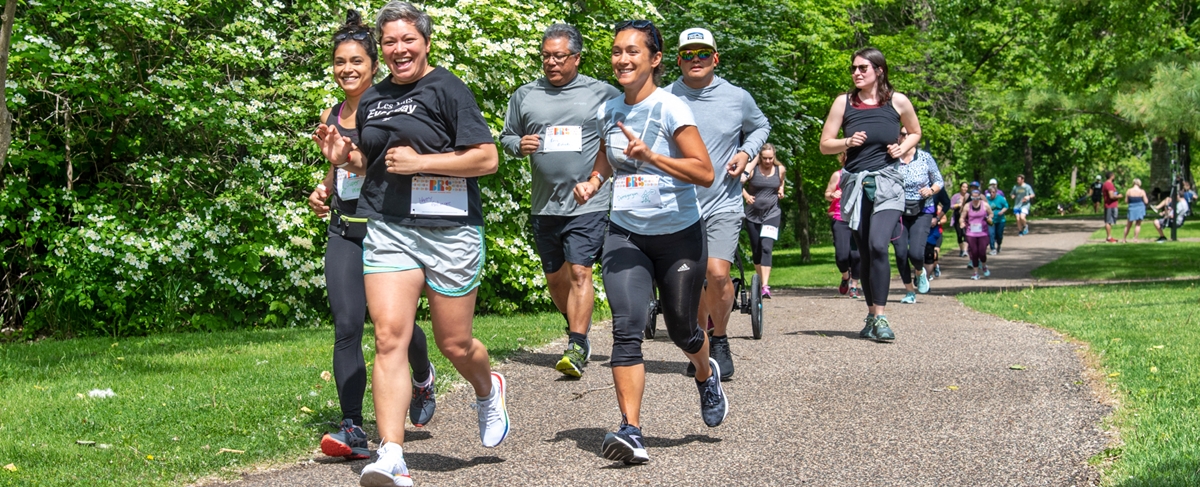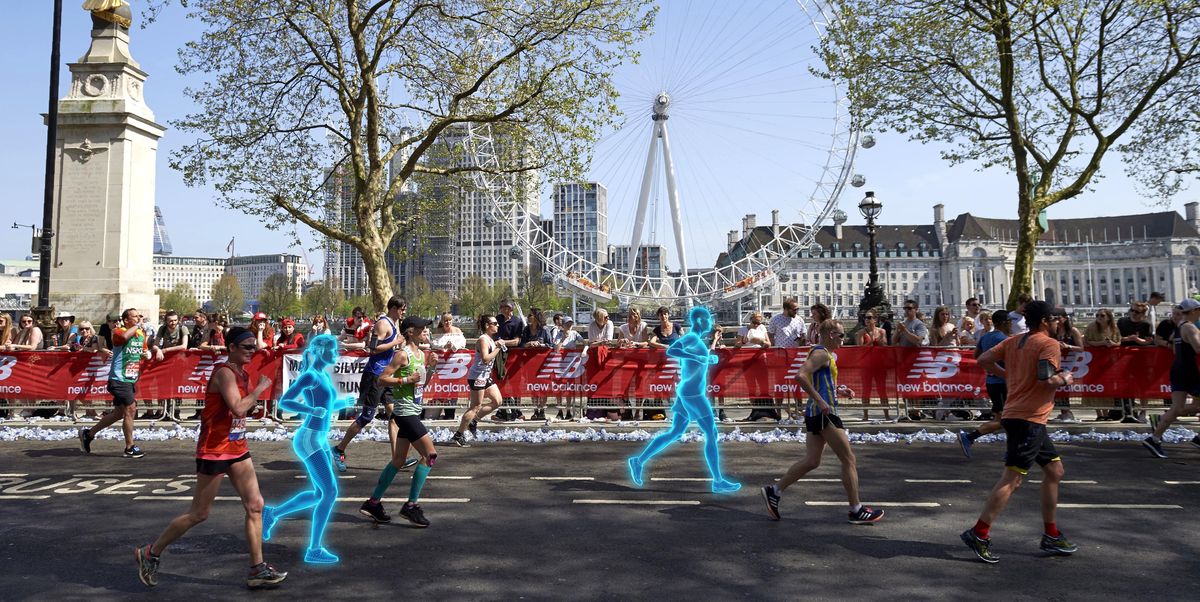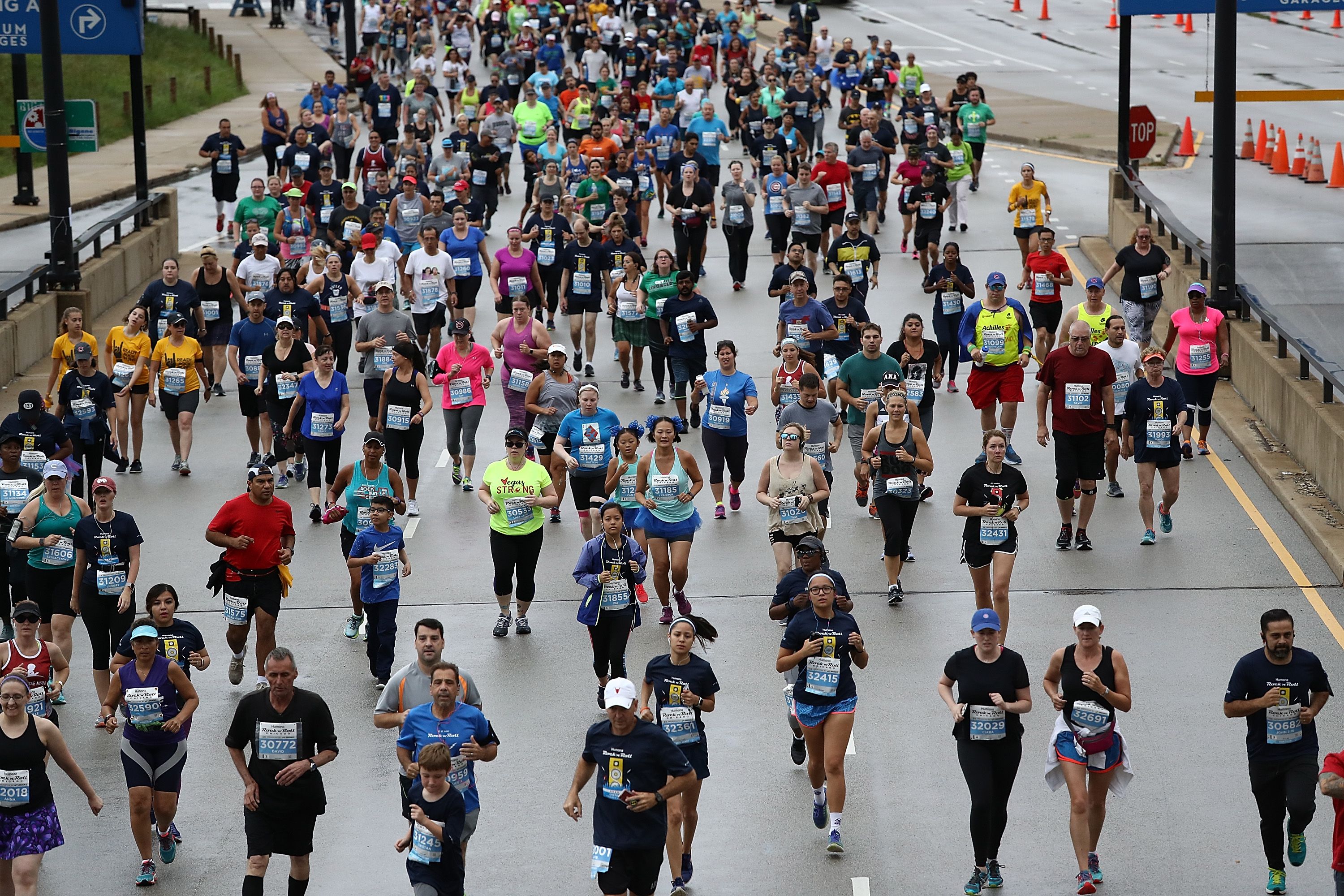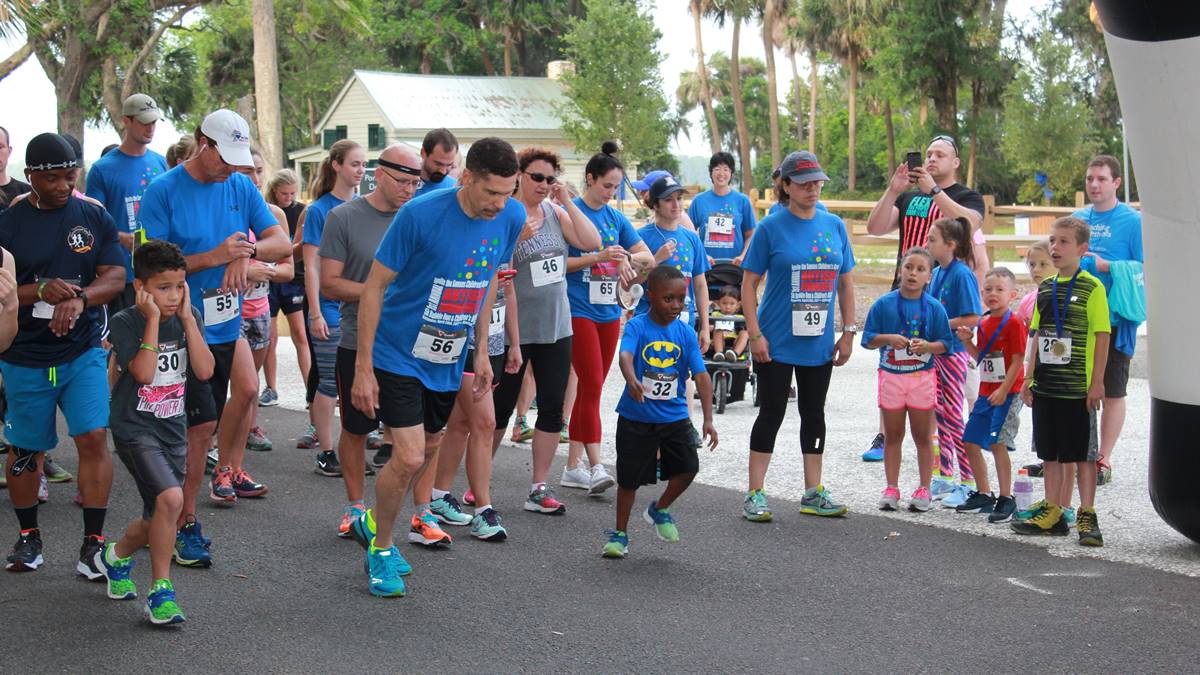

Featured
How To Organize 5K Run
Published: August 12, 2023
Learn how to organize a featured 5K run and create a memorable event for participants, with expert tips and guidance.
Introduction
Welcome to the world of 5K runs! Whether you’re an avid runner, a fitness enthusiast, or simply looking to challenge yourself, organizing a 5K run can be an exciting and rewarding endeavor. Not only does it provide an opportunity for individuals to showcase their physical capabilities, but it also brings communities together for a common cause.
But how do you go about organizing a successful 5K run? From planning the route to promoting the event, there are several key steps to consider. In this article, we will guide you through the process, offering valuable insights and tips to help you organize a memorable 5K run.
Before we dive into the specific steps, it’s important to note that organizing a 5K run requires careful planning, attention to detail, and effective communication. It’s not a venture to be taken lightly, but with the right approach and a dedicated team, you can create an event that participants will remember for years to come.
So, if you’re ready to embark on this journey, let’s get started!
Step 1: Set a Goal
The first and most crucial step in organizing a 5K run is to set a clear and attainable goal. This goal will serve as the foundation for all your planning and decision-making throughout the process.
What is the purpose of your 5K run? Are you raising funds for a charitable cause, promoting a healthy lifestyle, or celebrating a specific event or milestone? Clearly defining your goal will not only give your event a sense of purpose but also help you attract participants and sponsors who resonate with your cause.
When setting your goal, make sure it is specific, measurable, achievable, relevant, and time-bound (SMART). For example, your goal could be to raise $10,000 for a local animal shelter within six months, or to gather 500 participants to raise awareness about mental health in the next three months.
Once you have established your goal, break it down into smaller, actionable objectives. These objectives will guide your planning process and enable you to track your progress along the way.
Remember, setting a goal is not just about the numbers. It’s also about creating a meaningful and memorable experience for participants. Think about what will make your 5K run unique and appealing. Will you offer special prizes, have live entertainment, or provide a scenic route? Consider what will make your event stand out from others and create a buzz.
Additionally, consider the logistical aspects of your goal. How many participants can your chosen venue accommodate? Do you have access to necessary resources such as timing systems, water stations, and medical assistance? It’s important to ensure that your goal aligns with the practicalities of organizing a 5K run.
By setting a clear goal, you will have a roadmap to follow throughout the planning process. It will help you stay focused, make informed decisions, and ultimately achieve a successful and impactful 5K run.
Step 2: Plan the Route
One of the key elements in organizing a 5K run is planning the route. The route you choose will not only determine the distance participants will cover but also contribute to the overall experience of the event.
When designing the route, take into consideration the terrain, accessibility, and safety of the course. A flat and scenic route is often preferred, as it offers an enjoyable experience for participants and allows for faster race times. Ensure that the route is well-marked with clear signage, arrows, or volunteers to guide the runners and prevent any confusion.
Consider the location of your event and the local community. Are there any specific landmarks or points of interest that you can incorporate into the route? This can add an extra element of excitement and engagement for participants by showcasing the unique aspects of the area.
It’s important to also consider the logistics of the route. Will you need to obtain any permits or permissions to use certain roads or public spaces? Check with the local authorities or city officials to ensure that you have the necessary approvals in place.
Another aspect to consider is the course certification. If you want your event to be recognized and trusted by serious runners, you may want to consider having your course professionally certified. This involves measuring the course accurately and documenting its adherence to specific standards.
Lastly, think about the flow of the race and the logistics of starting and finishing the event. Ensure that there is enough space for participants to gather at the starting line and cross the finish line smoothly. Consider factors such as parking availability, restrooms, and any potential road closures that may affect access to the event.
By carefully planning the route, you can create a memorable and enjoyable experience for participants. A well-designed route will not only attract more runners but also increase the chances of repeat participation in future editions of your 5K run.
Step 3: Obtain Permits and Permissions
When organizing a 5K run, it is essential to obtain the necessary permits and permissions. This ensures that you are in compliance with local regulations and can host a safe and successful event.
The specific permits and permissions required may vary depending on your location and the logistics of your event. Start by researching the local laws and regulations regarding road closures, public gatherings, and event permits. Contact the appropriate authorities, such as the local government or police department, to understand the specific requirements and application processes.
If your chosen route includes public roads, you may need to obtain road closure permits. This ensures the safety of the participants and minimizes disruption to traffic. Work closely with the local transportation authorities to determine the best approach for road closures and implement a well-coordinated detour plan if needed.
In addition to road closure permits, you may also need other permissions, such as permits for using public parks, staging areas, or other public spaces. Be prepared to provide detailed information about your event, including the date, time, expected number of participants, and any specific requirements or modifications you will be making to the area.
It’s important to start the permit application process well in advance of your event date, as it can take time for the applications to be reviewed and approved. Be proactive in providing all the necessary documentation and information requested by the authorities to expedite the process.
In some cases, you may also need to secure permissions from private property owners if your route passes through their land or if you plan to use their facilities for the event. This could include obtaining written agreements or contracts outlining the terms of usage.
Keep in mind that some permits may come with fees, so factor those into your event budget. It’s also advisable to have liability insurance in place to protect yourself and your organization in case of any unforeseen incidents.
By obtaining the required permits and permissions, you will demonstrate your commitment to following the rules and regulations, ensuring the safety and success of your 5K run. It also helps build a positive relationship with the local authorities and the community, setting the stage for future events.
Step 4: Establish a Budget
Creating a well-planned budget is a crucial step in organizing a 5K run. A clear understanding of your financial resources and expenses will help you make informed decisions and ensure that your event is financially sustainable.
Start by identifying all potential sources of revenue for your 5K run. This may include participant registration fees, sponsorships, fundraising efforts, and partnerships with local businesses or organizations. Consider the number of participants you anticipate and the price point for registration fees that will attract a sufficient number of participants while covering your costs.
Next, outline all the expenses you anticipate for your event. This may include venue rental fees, permits, signage, t-shirts, medals, timing systems, refreshments, entertainment, and any additional services or equipment you will need. Research and gather quotes from vendors or suppliers to estimate the costs accurately.
It’s important to allocate a portion of your budget for marketing and promotion. Consider various channels to reach your target audience, such as social media marketing, online advertising, flyers, and word-of-mouth. Set aside funds for creating engaging content and materials that will attract participants and sponsors.
Be realistic when budgeting and make sure you have accounted for all possible expenses. It’s better to overestimate and have a surplus than to be caught off guard with unexpected costs. Build in a contingency fund to cover any unforeseen expenses or emergencies that may arise during the planning process or on the day of the event.
Track your budget throughout the planning phase to ensure that you stay within your allocated funds. Consider using budgeting software or spreadsheets to keep everything organized and easily accessible.
By establishing a comprehensive budget, you will have a clear financial roadmap for your 5K run. This will help you make efficient financial decisions, attract sponsors, and ensure that your event is successful without any financial setbacks.
Step 5: Recruit Volunteers
Volunteers play a crucial role in the success of a 5K run. They provide support, guidance, and help create a positive and enjoyable experience for participants. Therefore, it’s important to recruit dedicated and reliable individuals who are passionate about your event and willing to contribute their time and skills.
Start by identifying the specific roles and responsibilities you need volunteers for. This may include tasks such as registration, course marshaling, water stations, first aid support, crowd control, and post-race cleanup. Determine the number of volunteers needed for each role and the time commitment required.
Reach out to your network, including friends, family, colleagues, and community organizations, to gauge their interest in volunteering. Utilize social media platforms, local community boards, and online volunteer matching websites to spread the word about your need for volunteers.
Create a clear and compelling volunteer job description highlighting the responsibilities and benefits of volunteering at your event. Emphasize how their involvement will contribute to the overall success and impact of the 5K run. Be transparent about the time commitment, training requirements, and any incentives or perks they will receive.
Establish a system for volunteer recruitment, screening, and selection. Conduct interviews or informal meetings with potential volunteers to assess their suitability for the roles. Consider their availability, skills, and enthusiasm to ensure a good fit.
Once you have assembled your volunteer team, provide them with proper training and orientation. Clearly communicate their responsibilities, expected behavior, and emergency procedures. Provide them with any necessary equipment or supplies they will need to fulfill their roles effectively.
During the event, make sure volunteers feel appreciated and supported. Share words of encouragement, express gratitude, and provide breaks and refreshments as needed. Consider organizing a post-event gathering or sending personalized thank-you notes to express your appreciation for their valuable contributions.
By recruiting a dedicated team of volunteers, you will create a positive and engaging environment for participants. Volunteers are the backbone of your event, and their enthusiasm and support will make a significant impact on the overall success and experience of the 5K run.
Step 6: Set the Date and Time
Selecting the right date and time for your 5K run is vital to attract participants, ensure seamless logistics, and maximize the overall success of your event.
Start by considering the time of year and local weather conditions. Opt for a season with favorable weather, avoiding extreme temperatures or inclement weather that could negatively impact the experience for participants. Take into account any local holidays or major events that may coincide with your preferred date, as they could affect attendance or availability of resources.
Research other events in your area to avoid scheduling conflicts. Check with local running clubs, athletic organizations, or event calendars to identify any major races or community events happening around your desired date. Avoid overlapping with popular events that may draw a similar target audience or potential participants.
Consider the day of the week and time of day that will be most convenient and accessible for participants. Look for a balance between weekday and weekend options, taking into account work schedules and family commitments. Keep in mind though that weekends are generally preferred for 5K runs as they tend to attract larger crowds.
Think about the time of day that is most suitable for your event. Consider factors such as sunrise and sunset times, temperature fluctuations, and participant preferences. An early morning start time is often favored as it allows participants to avoid peak heat and traffic congestion.
Consult with your volunteer team and any key stakeholders involved in the event to gather their input and availability. This collaborative approach will help you make an informed decision that takes into account the needs and preferences of all parties involved.
Once you have finalized the date and time, make sure to communicate it clearly and consistently in your event marketing materials, registration forms, and promotional channels. Use multiple platforms such as your website, social media accounts, and local community bulletin boards to spread the word and create anticipation for your event.
It’s important to note that flexibility is key when it comes to scheduling. Be prepared to adapt if unforeseen circumstances arise or if you receive valuable feedback from potential participants or stakeholders that suggests a different date or time may be more favorable.
By setting the right date and time for your 5K run, you will maximize participation, ensure smooth logistics, and create an enjoyable experience for all involved.
Step 7: Promote the Event
Promotion is key to ensure the success of your 5K run by attracting participants, generating excitement, and raising awareness about your event. Implementing a comprehensive and targeted promotional strategy will help you reach your target audience and maximize participation.
Start by creating a strong and compelling brand identity for your event. Develop a logo, tagline, and visual assets that reflect the spirit and purpose of your 5K run. Ensure consistency in your branding across all promotional materials, including your website, social media channels, posters, flyers, and online advertisements.
Utilize the power of social media platforms to spread the word about your event. Create engaging content that highlights the unique aspects of your 5K run, including testimonials from past participants, photos from previous editions, and information about any special features or activities. Encourage participants to share their excitement and promote the event on their own social media channels.
Connect with local running clubs, fitness centers, and community organizations to collaborate and cross-promote your event. Ask them to share information about the 5K run with their members or include it in their newsletters or event calendars. Consider offering discounts or incentives for their members to participate in your event.
Submit press releases and event listings to local newspapers, magazines, and online publications. Pitch your event as a unique and newsworthy story that will capture the interest of their readers. Consider reaching out to local radio stations or television networks for potential coverage or interviews to further promote your 5K run.
Create eye-catching posters and flyers to distribute in local businesses, schools, community centers, and other high-traffic areas. Include key details such as the date, time, location, registration information, and any unique selling points of your event. Consider offering early bird registration discounts or incentives to encourage early sign-ups.
Consider partnering with local businesses or corporate sponsors who align with the goals and values of your 5K run. Collaborate on promotional efforts, such as joint social media campaigns, sponsored posts, or giveaways. This partnership can provide additional exposure for your event and potentially attract more participants.
Engage with your audience through email marketing campaigns. Build an email list of interested participants or past attendees and send regular updates, reminders, and special offers to keep them engaged and excited about your event. Personalize your communications whenever possible to establish a stronger connection with your audience.
Lastly, make the registration process as convenient and accessible as possible. Utilize online registration platforms that allow participants to sign up easily and securely. Provide clear instructions, secure payment options, and multiple registration options to accommodate different preferences.
By implementing a comprehensive promotional strategy, you will increase the visibility and reach of your 5K run, attract more participants, and create a buzz around your event. Remember to monitor and evaluate the effectiveness of your promotional efforts to make necessary adjustments and ensure maximum impact.
Step 8: Organize Registration
Efficient and streamlined registration is crucial for the success of your 5K run. By organizing a smooth and user-friendly registration process, you can ensure a seamless experience for participants and effectively manage their information and fees.
Start by selecting a reliable and user-friendly online registration platform. Look for features that allow for easy creation and customization of registration forms, secure payment processing, and the ability to collect necessary participant information such as emergency contacts and signed waivers.
Design a registration form that collects all the essential information from participants, including their name, age, address, contact information, t-shirt size (if applicable), and any special requirements or preferences. Consider including options for additional purchases or donations, such as commemorative items or charity contributions.
Set competitive and attractive pricing for registration fees. Research similar events in your area and consider the value you are providing to participants to determine an appropriate price point. Offer early bird discounts or special rates for groups or community organizations to incentivize early and group registrations.
Make sure your registration process is easily accessible and prominent on your event website. Provide clear instructions and information on how to register, including any key dates and deadlines. Incorporate strong calls-to-action to encourage visitors to take action and register for your 5K run.
Utilize different marketing channels to promote your registration. Leverage social media platforms, newsletters, email campaigns, and partnerships to reach your target audience and create a sense of urgency and excitement around the event. Consider offering incentives such as limited-time discounts or exclusive perks for early registrants.
Consider providing registration support or a helpline for participants who may have questions or encounter issues during the registration process. Promptly respond to inquiries and ensure that your registration system is equipped to handle any technical difficulties that may arise.
Regularly monitor your registration data to gain insights into your participant demographics, registration trends, and revenue. Use this information to make informed decisions regarding marketing strategies, budgeting, and participant experience enhancements.
Prepare a confirmation email to send to participants once they have successfully registered. Include all relevant details such as their registration confirmation number, event date and time, participant guidelines, and any other important information they may need to know. Use these communications as an opportunity to build excitement and anticipation for your 5K run.
By organizing a seamless and user-friendly registration process, you will attract more participants and ensure an enjoyable experience from the first point of contact with your event.
Step 9: Arrange for Safety and Medical Assistance
The safety and well-being of participants should be a top priority when organizing a 5K run. It is crucial to arrange for appropriate safety measures and medical assistance to ensure a safe and secure event.
Start by conducting a thorough risk assessment of the venue and the course. Identify any potential hazards such as uneven terrain, sharp turns, or slippery surfaces. Take necessary precautions to address these risks, such as placing warning signs, securing loose obstacles, or rerouting the course if needed.
Engage with local law enforcement agencies and discuss plans for traffic control and crowd management. Seek their advice and support in implementing effective safety measures and ensuring a smooth flow of participants and spectators.
Collaborate with medical professionals or first aid organizations to provide medical support during the event. Arrange for a designated medical tent or area where participants can seek assistance if needed. Ensure that your medical team is equipped with the necessary supplies and trained in responding to common running-related injuries and medical emergencies.
Consider having water stations strategically placed along the route to keep participants hydrated. Ensure that these stations are staffed with volunteers who can provide water and assistance as needed. Communicate the locations of these stations to participants beforehand, so they know where to expect them.
Communicate safety guidelines and participant expectations clearly. This includes emphasizing the importance of following the designated route, obeying traffic regulations, and respecting the instructions of volunteers and officials. Encourage participants to stay aware of their surroundings and alert any staff or volunteers about any potential safety concerns they may observe.
It is essential to have an established emergency response plan in case of unforeseen incidents. Share this plan with key event staff, volunteers, and medical personnel. Ensure that everyone involved is aware of their roles and responsibilities in case of an emergency and that communication channels are in place to respond efficiently.
On the day of the event, conduct a thorough safety inspection before the race starts. Check that signage, barriers, and markings are in place and clearly visible to participants. Confirm that emergency exits are accessible and well-marked.
After the event, gather feedback from participants, volunteers, and medical staff to evaluate the effectiveness of your safety measures. Take note of any incidents or areas for improvement and use this information to enhance safety protocols for future events.
By arranging for safety and medical assistance, you can provide participants with the peace of mind they need to enjoy the 5K run and ensure a successful and incident-free event.
Step 10: Coordinate Race Day Logistics
Race day is the culmination of all your efforts in organizing a 5K run. It is essential to coordinate and manage the logistics effectively to ensure a smooth and successful event.
Start by creating a detailed timeline and schedule for race day. Determine when volunteers, staff, and participants need to arrive, and outline the key activities and milestones throughout the day. Communicate the schedule to all involved parties to ensure everyone is on the same page.
Set up the event venue and preparation areas, including registration booths, information desks, and a designated area for participant warm-ups. Ensure that signage is clear and visible, guiding participants to the designated areas.
Allocate sufficient time for participants to pick up their race packets and bibs before the event begins. Consider having a separate line or designated time slots for participants who registered on race day to ensure a hassle-free experience for all.
Coordinate with timing services to ensure accurate recording of participant race times. Set up the necessary equipment, such as timing mats and clocks, at the starting line and finish line. Test the equipment prior to the event and communicate any necessary instructions to participants.
Ensure that hydration stations along the course are fully stocked with water and any other designated beverages. Assign volunteers to manage these stations and provide participants with cups or bottles of water as they pass by.
Organize a clear and organized race start, ensuring that participants are properly lined up and aware of any pre-race announcements or instructions. Have a well-defined starting line and use a countdown system or starting horn to signal the start of the race.
Monitor and communicate any potential weather-related or safety concerns leading up to the event, such as excessive heat, lightning, or poor air quality. Have contingency plans in place in case any changes to the event need to be made due to unforeseen circumstances.
Throughout the race, have designated course marshals strategically placed to guide participants and ensure they stay on the designated route. These volunteers can also assist with any safety concerns or issues that may arise along the course.
Coordinate the logistics for post-race activities, including awards ceremonies and any additional festivities. Prepare any prizes or awards to be presented to the top finishers, as well as any post-race refreshments or entertainment that you have planned.
Finally, organize a systematic process for post-race cleanup. Assign volunteers to help with dismantling and packing up equipment, recycling or disposing of waste, and restoring the venue to its original condition.
By effectively coordinating race day logistics, you can create a memorable and well-executed event that leaves participants with a positive experience and a desire to return for future editions of your 5K run.
Conclusion
Organizing a 5K run requires careful planning, attention to detail, and effective execution. By following the ten steps outlined in this guide, you can set yourself up for success and create a memorable event that leaves a lasting impact on participants and the community.
Remember to start by setting a clear and attainable goal that aligns with your purpose and resonates with your target audience. Plan the route carefully, considering safety, accessibility, and the overall experience for participants.
Obtain the necessary permits and permissions, ensuring compliance with local regulations and building positive relationships with the local authorities. Establish a realistic budget to help you make informed financial decisions and ensure the financial sustainability of your event.
Recruit passionate and dedicated volunteers who will enhance the participant experience and provide essential support throughout the event. Set the date and time strategically, considering factors such as weather conditions, local events, and participant preferences.
Promote your event through various channels to attract participants and create excitement and anticipation. Organize the registration process to be seamless and user-friendly, making it easy for participants to sign up and providing clear communication throughout.
Arrange for safety measures and medical assistance to ensure the well-being of participants during the event. Coordinate race day logistics carefully, from setting up the venue to managing the flow of participants and executing a smooth race start and finish.
In conclusion, organizing a 5K run is a rewarding endeavor that brings communities together, promotes health and fitness, and supports various causes. With thorough planning, effective communication, and attention to detail, you can create an event that resonates with participants and leaves a positive impact. Embrace the journey, learn from each experience, and continuously strive to improve and innovate to create an even more successful and fulfilling 5K run in the future.









